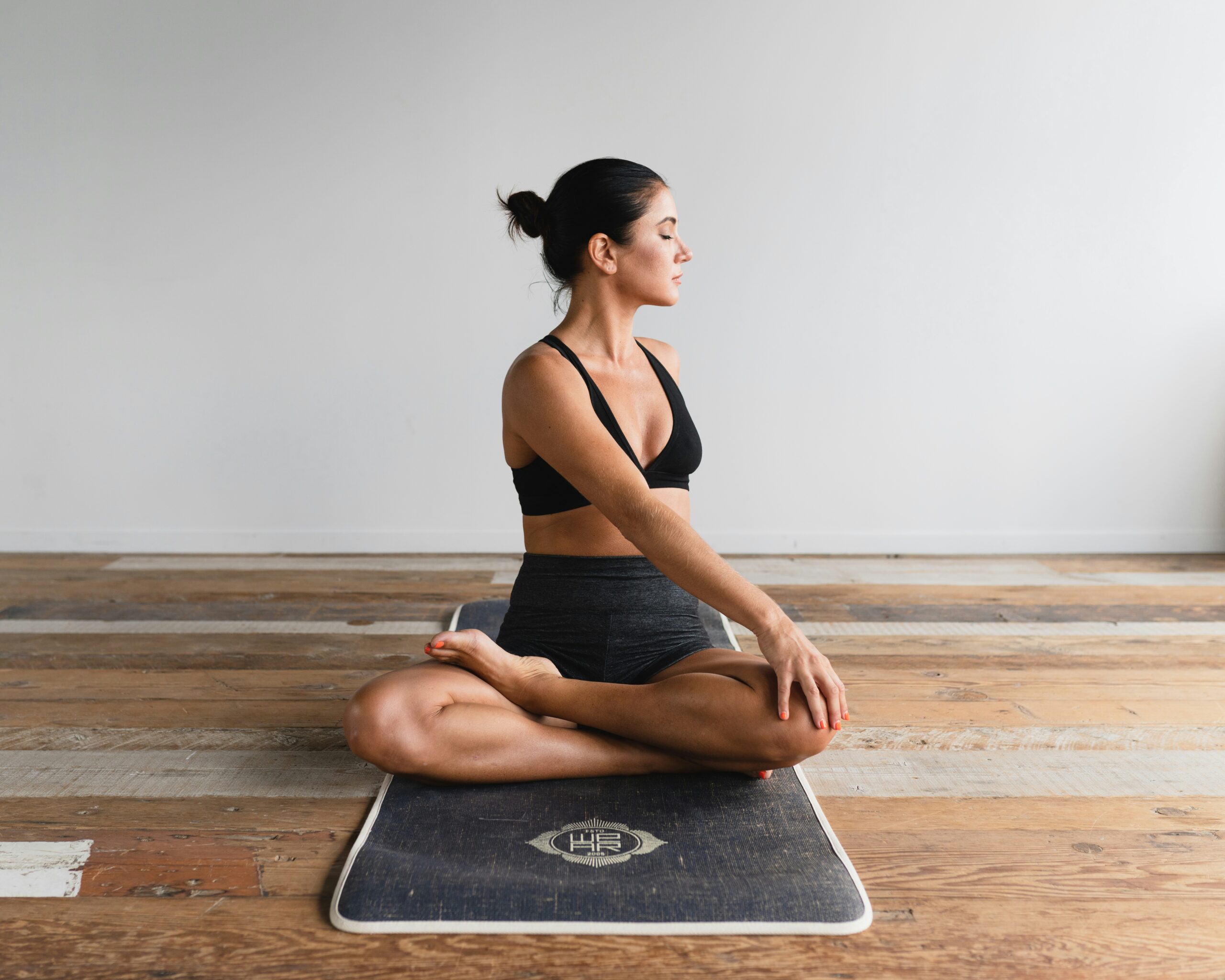Waking up with stiffness, discomfort, or pain can set a negative tone for the whole day. Many of us experience tension in our muscles and joints after a long night of sleep, especially if we’re managing conditions like chronic back pain, arthritis, or fibromyalgia. The good news? A few minutes of morning stretching can make a world of difference, especially for those with chronic pain conditions.
Morning stretches are a simple yet highly effective way to improve flexibility, reduce pain, and energize your body for the day ahead. Whether you’re new to this or looking to add to your current routine, this guide will show you how to start your day pain-free with step-by-step stretching exercises, tailored for chronic pain relief.
What Are Morning Stretches and Why Do They Work
Morning stretches are simple, deliberate movements that gently engage your muscles and joints after hours of rest. These exercises don’t just target localized stiffness; they offer whole-body benefits, especially for those with chronic pain, and increase flexibility over time.
The Science Behind Morning Stretching
- Improved Blood Flow: Stretching, especially in the morning, increases blood flow to your muscles. This increase in oxygen-rich blood flow wakes up your body and prepares your muscles for activity.
- Reduced Muscle Tension: Stretching relieves overnight stiffness in muscles and joints, and makes you feel comfortable.
- Increased Joint Mobility: Regular stretching increases range of motion over time, making daily tasks easier.
Research supports this. A study published in the Journal of Physical Therapy Science found that regular stretching improves overall muscle function while reducing pain and discomfort, especially in people with sedentary lifestyles or chronic pain conditions.
Benefits of Stretching in the Morning
Adding a quick stretching routine to your morning can have long-term effects on your overall well-being. Stretching daily, even for 10-15 minutes, improves flexibility, manages pain, and supports muscle health if done consistently.
Short Term Benefits
- Ease Morning Stiffness: Reduce that “hard to get out of bed” feeling by loosening up tight muscles. Simple movements in the morning can gently mobilize your joints and prepare your body for the day ahead.
- Boost Energy Levels: Gentle movement wakes up your body and mind, giving you a natural energy boost.* Improve Posture: Target common tension areas like neck, shoulder, and back to support better alignment.
Long Term Benefits
- Increase Flexibility: Regular stretching gradually increases range of motion. Over time, this can result in less pain by reducing muscle tightness and improving posture.
- Relieve Chronic Pain: Focused stretches help alleviate symptoms of arthritis, fibromyalgia, and lower back pain.
- Reduce Stress: Stretching combined with deep breathing promotes relaxation and mental clarity for the day ahead.
Better yet, this practice fits into even the busiest schedules. A 5-10 minute routine is all you need to experience benefits.
Morning Pain Hot Spots
Before we get started, let’s address the areas of the body that are most prone to morning discomfort.
- Lower Back: Sleeping in awkward positions or on an unsupportive mattress can cause stiffness or pain.
- Neck and Shoulders: Stress or poor sleeping posture often causes tension in this area, and shoulder pain is a common issue that can interfere with daily activities or sports. Targeted stretches can help relieve shoulder pain and improve mobility.
- Hips: Many chronic pain sufferers report tightness in their hip flexors upon waking.
- Joints: Conditions like arthritis make joint pain worse in the morning due to extended periods of inactivity.
By targeting specific stretches to these areas, you’ll relieve pain and start your day with more mobility and comfort.
Step by Step Morning Stretch Routine
1. Deep Breathing
Start seated or lying down. Take slow, deep breaths in through your nose and out through your mouth for 2 minutes. This helps calm your mind, release tension, and oxygenate your body by increasing blood flow to your muscles, which aids relaxation and prepares your body for stretching.
2. Gentle Neck Stretch
- Tilt your head to one side, and bring your ear towards your shoulder.
- Hold for 15 seconds per side.
- Roll your head gently in a circular motion to release neck tension further.
3. Shoulder Rolls
- Sit or stand with your back straight.
- Roll your shoulders slowly forward and backward in a circular motion, 10 times each direction.
- This helps release stiffness and improves shoulder mobility.
4. Cat-Cow Pose for Back Pain* Start in a tabletop position (hands and knees on the floor).
- Arch your back upwards while tucking your chin (Cat Pose).
- Slowly drop your belly while lifting your head and chest (Cow Pose).
- Repeat 8-10 times. The Cat-Cow pose is a form of dynamic stretching that warms up the back, improves mobility, and prepares the body for exercise. This stretch is great for back pain.
5. Standing Hamstring Stretch
- Stand up straight and place one heel on a low surface, like a chair or step.
- Keep your back straight as you lean forward slightly, feeling the stretch in the back of your thigh.
- Hold for 20 seconds per leg. When doing holding stretches like this, aim to hold for 15-30 seconds to maximize flexibility and muscle lengthening.
6. Seated Forward Fold
- Sit with both legs extended forward.
- Slowly reach your arms towards your toes, keeping your back straight.
- Feel the stretch in your lower back and hamstrings. Hold for 20 seconds. This seated forward fold is a form of static stretching where you hold the position to improve flexibility and recovery after exercise.
7. Side Stretches
- Stand with your feet shoulder-width apart.
- Extend one arm overhead and lean to the opposite side.
- This side stretch engages the whole body and promotes flexibility and balance.
- Hold for 15 seconds and repeat on the other side.
8. Ankle Rotations
- Sit down and lift one leg and rotate your ankle in small circles clockwise and counterclockwise for 10 reps each.
- Repeat with your other ankle.
For a blissful experience, pair this routine with calming music or a nature sound playlist.
Stretches for Chronic Pain
If you’re managing a chronic condition like fibromyalgia or arthritis, these stretches can still work for you, with a little modification.
- Keep Movements Gentle: Don’t overdo it to prevent flare-ups.
- Focus on Breathing: Deep breathing helps relax muscles and calm the body.* Consult a Professional: Before starting a new exercise program or modifying your stretching routine, consult a healthcare professional, especially if you have chronic pain or health conditions. A physical therapist or fitness coach can help customize routines to your needs and ensure your exercise program is safe and effective.
Remember, listen to your body and stop if a stretch feels painful or uncomfortable.
Tips to Make Morning Stretching a Habit
Consistency is key to unlocking the full benefits of morning stretching. Try these tips to make it a part of your daily routine:
- Prepare the Night Before: Lay out your yoga mat or create a dedicated stretching space.
- Set a Reminder: Use an alarm or sync the routine with another morning practice, like brushing your teeth.
- Stay Patient: Results like flexibility and reduced pain may take a few weeks, but they’re worth the effort.
- Mix it Up: Keep things interesting by trying different stretches or incorporating props like foam rollers.
- Find a Buddy: Encourage a friend to join you or connect with the Get Healthy Squad community for added motivation and accountability.
- Adjust for Your Fitness Level: Choose stretches and intensity that match your current fitness level to ensure safety and maximize effectiveness.
Once you’ve got a routine going, make sure to track your progress and celebrate even small improvements. Remember, every stretch counts towards overall well-being.
For those days when you feel less motivate,d try incorporating mindful breathing exercises into your stretching routine. This will not only clear your mind but also make your stretches more effective.
With the support of our community and the convenience of technology, making morning stretching a habit has never been easier.
Transform Your Mornings with Simple Stretches
Invest 5-10 minutes each morning in a simple stretching routine and you’ll see dramatic improvements in your physical and mental well-being. Stretching is a form of physical activity that supports pain management and overall health. Say goodbye to stiffness and pain and hello to more energy, better posture, and a more positive start to your day.
Start slow, be consistent, and adjust stretches to your body. For more wellness tips and video-guided routines, check out the rest of our blog or join our Get Healthy Squad community today. Your pain-free mornings are just a stretch away. Taking care of your body and mind is key to overall health, and incorporating stretching into your daily routine can make a big difference. It loosens tight muscles, improves circulation, reduces injury risk, and relieves stress and tension.
There are many benefits to stretching daily, and it’s important to find stretches that work for you. Remember to listen to your body and adjust as needed to avoid strain or discomfort. And don’t forget to join our Get Healthy Squad community for more personalized advice and support on your wellness journey! So why wait? Start stretching daily today for a healthier, happier
More Healthy Habits
Daily Stretches
As mentioned above, incorporating a simple stretching routine into your daily morning routine can have many benefits. Daily stretches can be modified to suit different fitness levels, so everyone can do them. But remember, stretching isn’t just for mornings – taking breaks throughout the day to stretch can improve circulation, reduce tension and stress in the body, and maintain flexibility.
Mindful Eating
In addition to regular exercise, nutrition is key to a healthy lifestyle. Instead of following strict diets or cutting out entire food groups, focus on mindful eating habits. This means listening to your body’s hunger and fullness cues, choosing whole and nutritious foods, and practicing moderation. This approach not only promotes a healthy relationship with food but also allows for occasional indulgences without guilt.
Prioritizing Sleep
Getting enough sleep is crucial for overall health and productivity. Aim for at least 7-9 hours of sleep each night, as it allows your body to rest and repair itself. To improve the quality of your sleep, establish a bedtime routine that includes winding down activities such as reading or listening to calming music. Avoid using electronic devices right before bed as the blue light emitted can disrupt your natural sleep cycle.
Limiting Screen Time
In today’s digital age, it’s easy to get lost in screens, whether it’s our phones, TVs, or computers. However, excessive screen time has been linked to negative impacts on health, such as eye strain and disrupted sleep patterns. To maintain a healthy relationship with technology, try to limit your screen time and take breaks throughout the day. This allows for more time to engage in other activities, such as exercise or spending quality time with loved ones.
Incorporating Exercise
Regular physical activity is essential for maintaining a healthy body and mind. It not only helps to manage weight but also reduces the risk of chronic diseases such as heart disease and diabetes. Find an exercise routine that works for you, whether it’s going for a run, attending fitness classes, or simply taking long walks. Remember to listen to your body and start slow if you’re new to exercising.
Practicing Mindful Eating
Mindful eating is the practice of being present and aware of your food choices and experiences while eating. It involves paying attention to your body’s hunger and fullness cues, as well as savoring each bite and truly enjoying the flavors and textures of your food. By practicing mindful eating, you can develop a healthier relationship with food and make better choices for your overall well-being.
Creating a Technology-Free Zone
In today’s society, technology is everywhere – from our work to our homes. It can be challenging to disconnect, but taking breaks from technology is crucial for our mental health. Create a designated technology-free zone in your home, such as the dining room or living room, where phones, laptops, and other devices are not allowed. Use this space to practice mindful eating without the distraction of notifications and updates. This can help you fully focus on your meal and appreciate it more.
Eliminating Distractions
In addition to creating a technology-free zone, it’s essential to eliminate other distractions while eating. Turn off the TV, put away books or work materials, and sit at a table rather than eating on the go. When we are distracted while eating, we tend to eat more mindlessly and may not even realize how much food we have consumed. By removing these external distractions, you can tune in to your body’s signals and make better decisions about when to stop eating.
Using All Five Senses
When practicing mindful eating, it’s important to engage all five senses – sight, smell, taste, touch, and sound. This means taking the time to really look at your food, noticing its colors and textures. Smell the aroma of your meal and savor each bite by chewing slowly and intentionally. Pay attention to the different flavors and textures in your food, as well as how it feels in your mouth. You might even try closing your eyes while eating to focus solely on the taste and texture of each bite.
Mindful Meal Preparation
Being mindful about meal preparation can also enhance the experience of eating. Take some time to plan out your meals for the week ahead so that you have all the necessary ingredients on hand. When preparing a meal, focus on one task at a time – chopping vegetables, marinating meat, or boiling water.
Medical Disclaimer:
This blog is for informational purposes only and should not be considered medical advice. Always consult with a healthcare professional before beginning any new exercise or stretching program, especially if you have existing health conditions or chronic pain. Individual experiences and results may vary, and you should stop immediately if you experience pain, discomfort, or any unusual symptoms.







